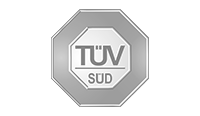Request a Demo
Trusted by leading brands, retailers, manufacturers and service providers across industries such as:
















Vendors are the lifeblood of every supply chain. Effectively managing your vendors is crucial for maintaining operational efficiency, regulatory compliance, customer satisfaction, and brand reputation in today’s competitive business landscape. Vendor Compliance Management ensures that your supply chain functions sustainably and responsibly, enabling you to achieve your strategic objectives.
Keeping vendors accountable for their products and services is vital to the success of your business. There are some challenges: supply chains are becoming more complex, there is more focus on sustainability and new regulations are appearing more often. Alongside these, you will have limited resources to manage vendors and conduct ongoing due diligence. Inadequate visibility and ineffective control over vendor data and activities are contributors to poor vendor compliance.
Vendor compliance is a vital aspect of cost reduction strategies that is often overlooked, leading to missed opportunities. It plays a significant role in maintaining product and service quality, meeting customer expectations, and avoiding financial and reputational risks. Non-compliance can result in significant cost losses due to rework, processing errors, delays and disruptions in the supply chain. There is also the danger of penalties and fines. Without a robust vendor compliance system in place, you have no recourse when things go wrong, leading to unscheduled price increases, late deliveries, recurring problems, and ongoing negative impacts.
The absence of a centralized vendor management system can lead to a lack of visibility, inefficient communication, inconsistent processes, increased risk, missed cost savings, data fragmentation, and limited scalability. Without a structured two-way process, feedback is lost and problems are hard to rectify. Companies are being exposed to more risk as global, regional, and national regulations are implemented. Sustainability initiatives across organizations are increasing, affecting both buyers and sellers. Lastly, every company has limited resources to manage vendors and conduct ongoing due diligence. The most effort should be focused on where it has the most impact. Implementing a centralized system can help overcome these challenges and streamline vendor management processes for improved efficiency and effectiveness.
Establish open channels with vendors, clearly communicate requirements, standards and expectations. Foster a collaborative culture and continuously seek areas of improvement and innovation. Provide training, guidelines and support when needed.
Use cloud-based software solutions to streamline compliance processes. Implement a centralized vendor management portal for onboarding, approvals, and compliance management. This portal serves as a collaboration tool, allowing authorized users to easily access and manage vendor information in one place.
Define mutually agreed KPIs to measure vendor compliance. Monitor metrics such as on-time delivery, product quality, defect rates, and adherence to specifications. Conduct regular assessments through on-site inspections, documentation reviews, and performance evaluations.
Periodically audit suppliers to ensure compliance with regulatory requirements, quality standards, and contractual obligations. Address any identified issues promptly and work with vendors to implement corrective actions.
Encourage feedback from both internal stakeholders and vendors. Implement a process for capturing lessons learned and best practices from vendor engagements. Regularly review and refine your compliance policies and procedures.
Establish trust and open lines of communication. Involve vendors in the decision-making process and seek their input on compliance-related matters. Encourage transparency and proactive problem-solving.
Maintain comprehensive and updated records of contracts, evaluations, and compliance documentation. This ensures transparency, facilitates audits, and provides a historical reference for future interactions.
Identify and assess potential risks associated with vendor non-compliance. Develop strategies to mitigate these risks, such as diversifying your vendor base, implementing contingency plans, and regularly monitoring vendor performance. Stay updated on industry regulations and standards to address compliance issues proactively.
By following these tips, businesses can excel in Vendor Compliance Management, ensuring contribution to long-term business success, adherence to sustainability standards and driving overall efficiency in the supply chain.